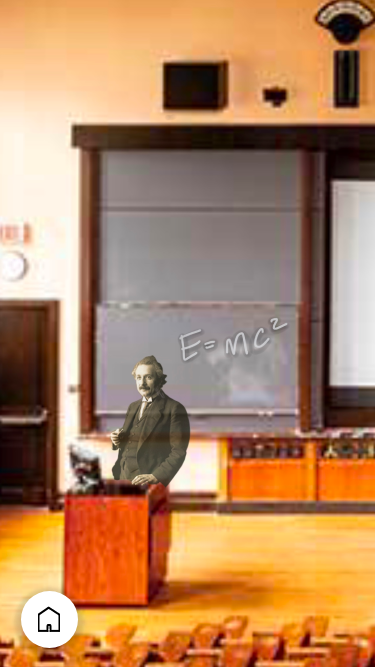Phantasmagoric Design:
Staging personal, meaningful and transformative AR experiences
junior thesis
january 2020 | academic paper • human-computer interaction • augmented reality
WHAT IS PHANTASMAGORIC DEISGN?
In an exploration framed by experience-focused HCI literature and a pragmatist definition of experience, I present phantasmagoric design, a design practice for AR technologies that stages layered, immersive, user-participatory and social experiences.
Phantasmagoric design’s purposeful layering of varied mediums, modes of sense-making, and temporal contexts, along with the ambiguity that exists between these layers, influences the user to have creative agency in creating a unified, personal, and meaningful experience.
APPLYING PHANTASMAGORIC DESIGN TO ADORA
After defining phantasmagoric design, I provide two examples by applying phantasmagoric design principles to Adora, the startup I was building at the time.
FEATURE 1: TIME WARP
In TimeWarp, users can use AR to discover situated visualizations of historical events and notable alumni and in this way experience Princeton history as they walk around campus.
By adding a layer of history to the user’s present location, TimeWarp influences the user to imagine campus decades, even centuries ago, activating the user’s imagination and encouraged the user to thread this historical context into their experience of campus.
By accessing various temporal contexts and introducing the narratives of alumni, TimeWarp enhances users’ experience of campus by providing various, real perspectives for users to relate to and thus, enables users to better imagine themselves as a part of campus and, as a result, feel more connected to the university.
FEATURE 2: COLOR COMMENT
The main goal of ColorComment is to apply abstraction so that users can safely socialize beyond the limits of the TimeWarp feature and connect with current students and visitors.
Through ColorComment, after visiting or learning about a point of interest (POI), the user can 'Color Comment' on that stop by selecting a color to associate with the POI. In AR View, the marker for that POI would be marked with their chosen color. Also, there would be an ability to view the composite color spectrum associated with any POI. This composite color spectrum would provide a visualization of what colors other users associated with the POI and communicate of a large number of users commented similarly.
TimeWarp allowed for campus history and alumni experiences to be projected on to the user’s physical location while Color Commenting allows the reciprocal relationship. It allows the user to project themselves and their reflections onto the campus.
Ambiguity and abstraction leave space for an individual to freely interpret and make sense of their experience, resulting in more personalized experiences.
With ColorComment, users can contemplate the experience of others and reflect on how they do or do not relate to others. However, users are not burdened or distracted by literal transcriptions of others’ experiences and reactions. The user’s space and freedom of interpretation are also reinforced by the fact that ColorComment is an asynchronous form of interaction– users independently annotate information that is co-located.



